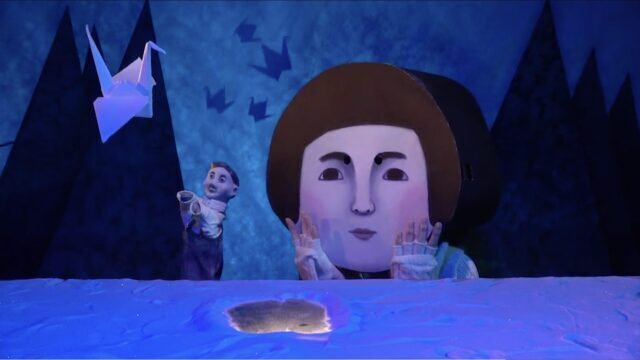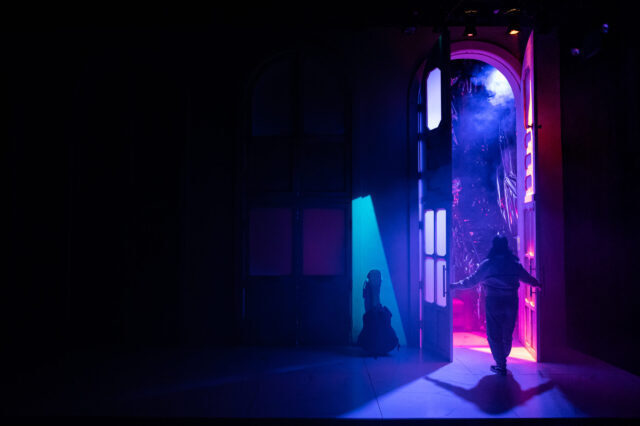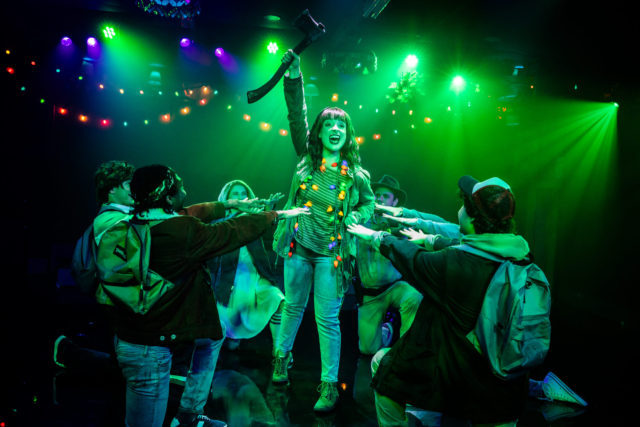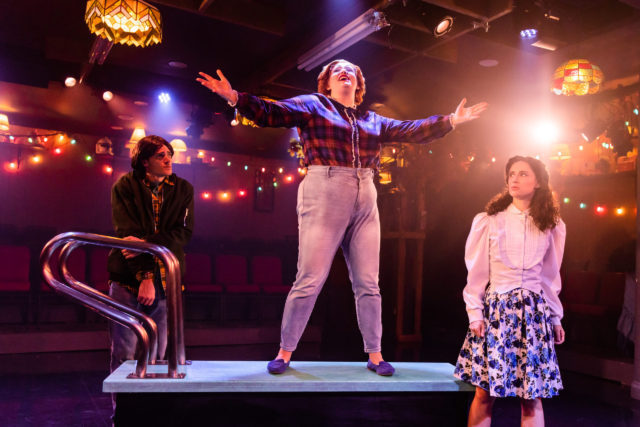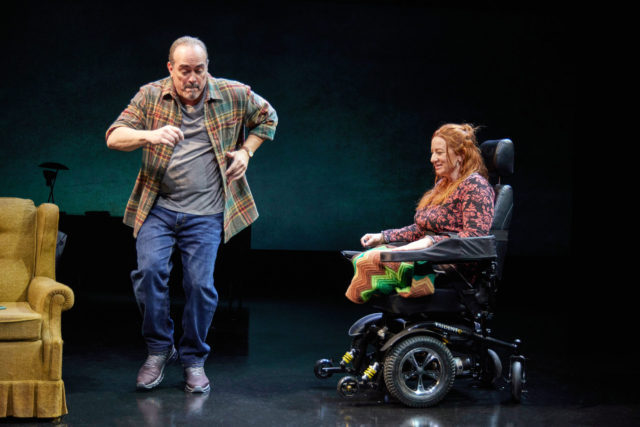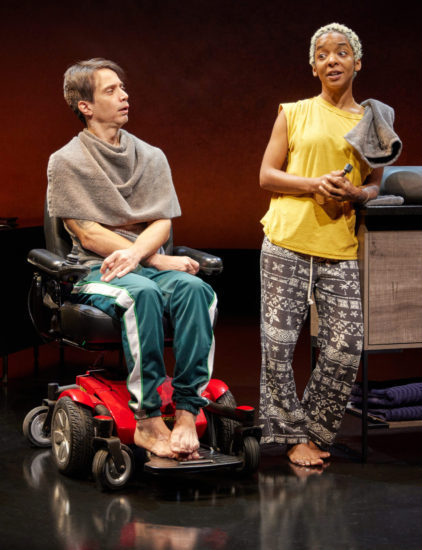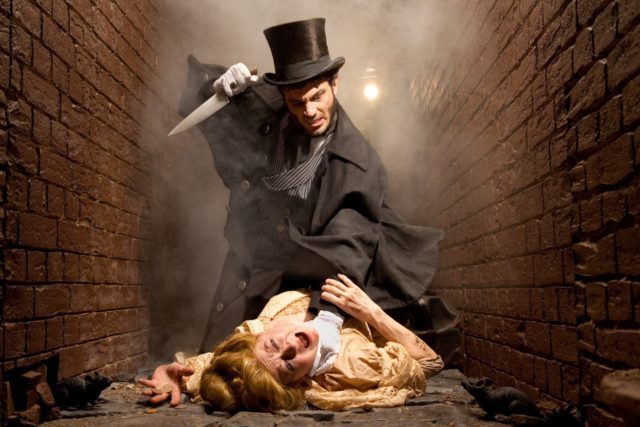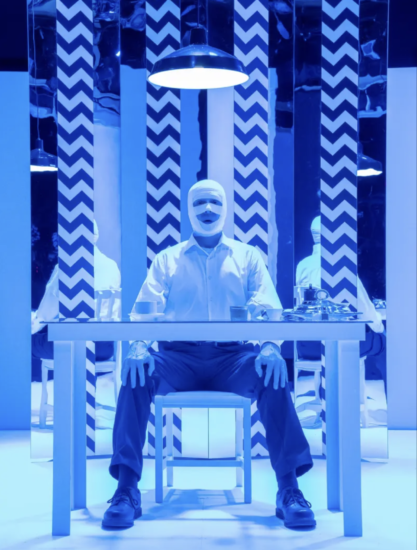
Jill Sobule and her band rock out in F*ck7thGrade at the Wild Project (photo by Eric McNatt)
F*CK7THGRADE
The Wild Project
195 East Third St. between Aves. A & B
Through November 19, $35-$45
thewildproject.com
I remember seventh grade all too well, a turning point in my development. I got bar mitzvahed. I asked a girl out for the first time, a cheerleader, and she said no. I went to my first concert, Paul McCartney and Wings at Madison Square Garden. A friend and I hid in the guidance counselors’ office when two big guys from an extramural basketball team we had beaten the night before — affiliated with a local church — were seeking to rearrange our faces. I watched other kids get bullied and hoped I would not suffer the same consequences. At a party, I kissed a girl.
Beloved singer-songwriter Jill Sobule uses that year of her life as a jumping-off point in her delightful, poignant, and utterly charming queer coming-of-age show, deftly titled F*ck7thGrade. Continuing at the Wild Project through November 8 and fully deserving of a longer run there or elsewhere [ed. note: the show has been extended through November 19], the ninety-minute production consists of Sobule sharing intimate moments from her past, standing front and center with her guitar, joined by her all-woman band, Secrets of the Vatican: Julie Wolf on keyboards, Kristen Ellis-Henderson on drums, and Nini Camps on bass, each of whom also plays various characters from throughout Sobule’s life.
“It fucking sucked being a teenager, didn’t it?” Sobule asks the audience, a mix of Sobule fans and adventurous theatergoers. “Did any of you feel awesome when you were thirteen? Raise your hand if you wanted to die. Well, I had it worse than any of you.”
Wearing an Orange Crush T-shirt, blue jeans, and red high-top Converse All-Stars (the costumes are by David F. Zambrana), Sobule alternates between personal stories and songs from throughout her career, from 1990’s Things Here Are Different to 2018’s Nostalgia Kills. Born in Denver in 1961, Sobule changed schools often while experimenting with drugs, wondering about her sexual orientation, and trying to find her place.
“The freaks got stoned, wore cooler clothes, and listened to better music. That sounded fun. I tried acid. We were thirteen,” she admits. She becomes infatuated with Mary (Camps), the new girl in school. “I loved how she smelled — a mix of Jean Naté and Marlboro Reds. And as I thought that, I suddenly was like: mmmm is this weird? This is weird, isn’t it.” That introduction leads into “Forbidden Thoughts of Youth,” in which Sobule sings, “Forbidden thoughts of youth — / They will never know — / My forbidden thoughts of you. / You will never know the truth.” That flirtation ends in a pathetically funny, very-seventh-grade way that many of us can identify with.
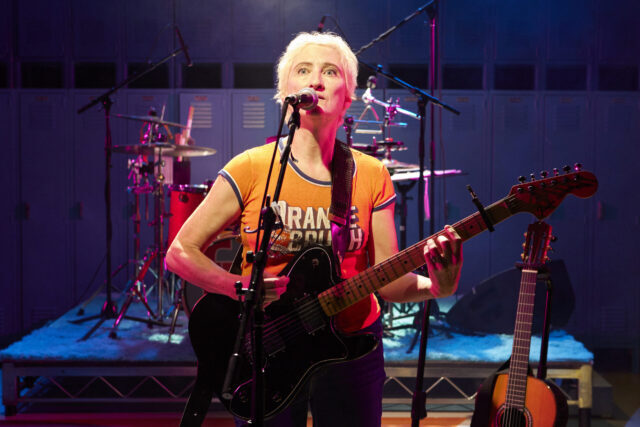
Jill Sobule shares her intimate story in poignant and funny F*ck7thGrade (photo by Eric McNatt)
Sobule relates how she traveled to Spain, started playing at open-mic nights, went to Nashville, and ultimately scored one of the biggest hits of the 1990s, the fabulously hooky “I Kissed a Girl,” but her instant success was bittersweet, as she was not allowed to actually kiss a girl in the video and the industry typecast her. She later delves into Katy Perry’s appropriation of the title.
As the show (which was delayed because of Covid, resulting in some rehearsals taking place over Zoom) nears its touching conclusion, Sobule comes to terms with various elements of her life — including her career, her feelings toward music, and her seventh-grade nemesis, Cathy Pepper — and Wolf, Ellis-Henderson, and Camps share their own memories as well.
Supplemented by a companion lobby exhibition of paintings by Marykate O’Neil, F*ck7thGrade features a lovely book by Liza Birkenmeier (littleghost, Dr. Ride’s American Beach House) and cogent direction by two-time Obie winner Lisa Peterson (Hamlet in Bed, Shipwrecked) on Rachel Hauck’s (Hadestown, What the Constitution Means to Me) set, basically a band rocking out in front of a row of high school lockers that occasionally are used. Oona Curley’s lighting and Elisabeth Weidner’s sound help further the intimacy between performer and audience. The leather-clad Camps, who is in the group Antigone Rising with Ellis-Henderson, is a standout as Sobule’s right-hand person, taking on multiple roles and singing harmony.
As always, Sobule is absolutely adorable, with her impish smile and short-cut blond hair; she might not be an actress, but you can feel and relate to her every emotion while laughing your head off. She points out that she had to learn all of Birkenmeier’s words and laments that she doesn’t have a monitor like Springsteen did. Her eyes connect with the crowd as she plays such memorable numbers as “Raleigh Blue Chopper,” “I Hate Horses,” “Strawberry Gloss,” ”I Put My Headphones On,” and “Mexican Wrestler,” all of which are likely to send you back to your own past.
Her tunes are an intoxicating mix of folk, pop, country, and blues rock. Early on, she sings, “I could play a bar chord when I was six, / play ‘Hey Joe’ with the Hendrix lick. / Yeah, I was a star, but Mr. Hill said: / ‘Girls fingerpick. It’s the boys who shred,’” so she makes sure to demonstrate that she can indeed shred. By the time she finishes up with two participatory songs, you’ll be a Jill Sobule fan, if you weren’t already. And, if you haven’t already, you’ll think to yourself, “Yeah, fuck seventh grade.”
